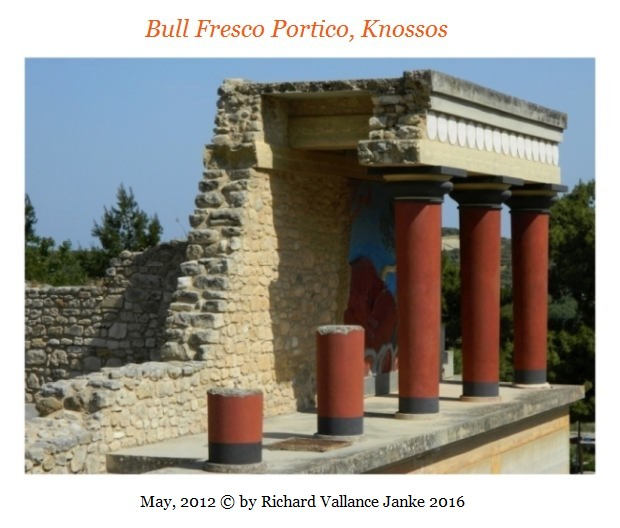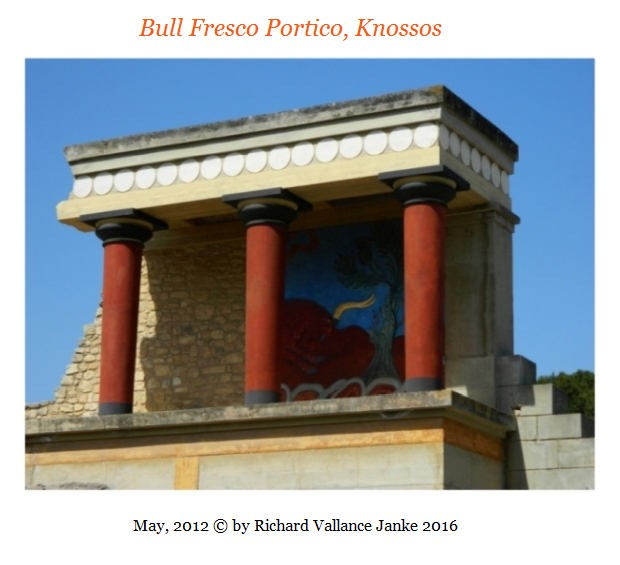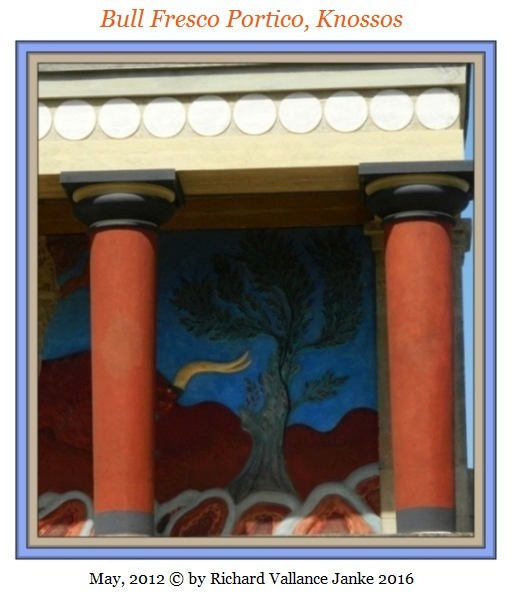Exquisite golden pin Zf 1 (Ayios Nikolaos Museum) fully deciphered in New Minoan:
This inscription, which appears to be entirely in Mycenaean derived New Minoan, is one of the loveliest I have ever come across, whether in Minoan or Mycenaean. There are similar inscriptions on Linear B tablets from Phaistos. The text waxes almost poetic and is quintessentially suited to the magnificent craftsmanship of this exquisite golden pin. The text in its entirety is utterly coherent, and is probably spot on. The syntax of the Greek had to be adjusted to meet the grammatical exigencies of the Minoan language. This explains the anomaly of qakisenuti, which is probably Minoan instrumental, hence “with (fine) craftsmanship”. And the craftsmanship is certainly that! This decipherment lends greater credence than I had previously imagined to the distinct probability that at least a few Minoan inscriptions were in fact written entirely in Mycenaean derived proto-Greek with the syntax adjusted to the requirements of the Minoan language. I have already fully addressed this phenomenon in a previous post, which I urge you to reread, in order to place this decipherment in its proper perspective. You can read that post here: Partial decipherment of Partial decipherment of Linear A tablet ZA 15 (Zakros) and the phenomenon of orthographic adjustment of superstratum words in the substratum language: https://linearbknossosmycenae.wordpress.com/2017/05/06/partial-decipherment-of-linear-a-tablet-za-15-zakros-and-the-phenomenon-of-orthographic-adjustment-of-superstratum-words-in-the-substratum-language/ I am therefore finally convinced that decipherment of Mycenaean derived New Minoan is an eminently attainable goal.
Tag: motifs
3 impressive photos of the Bull Fresco Portico Knossos, taken by Richard while he was there on May 1 2012
3 impressive photos of the Bull Fresco Portico Knossos, taken by Richard while he was there on May 1 2012:


Stunning Minoan fresco, Akrotiri, figs & Linear A tablet Zakros ZA 1, kireza = measurement of figs by the basket
Stunning Minoan fresco, Akrotiri, figs & Linear A tablet Zakros ZA 1, kireza = measurement of figs by the basket:This stunning fresco from Akrotiri, featuring the typical Minoan “blue monkey” motif, fanciful animals on a celestial backdrop of figs is truly amazing! It is one of my favourite Minoan-style frescoes by far. Immediately below it we find Linear A tablet Zakros ZA 1, on which the word kireza is inscribed. This word is so strikingly similar to the standard Minoan Linear A units of measurement, reza = standard unit of (linear) measurement adureza = standard unit of dry measurement tereza = standard unit of liquid measurement (e.g. Wine) that it is rather difficult to imagine it could be anything but a unit of measurement. However, I have only seen it used in conjunction with figs on any Minoan Linear tablet, and in fact, this is the only Minoan Linear A tablet on which kireza appears. Now the question is, what is the base unit of measurement of figs kireza refers to? Given that the number of kireza on this tablet is 42, it would appear that it is a relatively large standard unit of measurement. And the unit which leaped to my mind was (and is) a basket of figs, by which I mean a basket which can be carried on one’s shoulders. Additionally, as can be inferred from the Akrotiri fresco, women were tasked with gathering figs. This is the fifty-sixth (56) word in Minoan Linear A I have deciphered more or less accurately.

You must be logged in to post a comment.